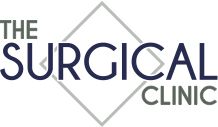Are you at risk for abdominal aortic aneurysm? This dangerous condition occurs when a weakened section of the aorta increases due to blood pressure. Knowing your risk factors is crucial for early detection and prevention. Knowledge is power, and our goal is to better equip you with the insight to know major risk factors, symptoms, and available treatments for abdominal aortic aneurysms.
What is an Abdominal Aortic Aneurysm?
An abdominal aortic aneurysm (AAA) happens when the aorta, which runs from the diaphragm and through the abdomen, bulges in the wall of the aorta. The aorta bulges due to the walling weakening from blood flow pressure and/or plaque buildup.
Aortic aneurysms can occur in the chest (thoracic aortic aneurysm) or in the abdomen which is known as an abdominal aortic aneurysm. Typically, the size of an abdominal aorta is around 2cm, but during an AAA the aorta can expand to more than 3cm, which is considered a danger zone.
As the aneurysm grows, it progressively weakens the artery wall, increasing the risk of rupture. When the aneurysm begins to bulge it poses a significant threat if not caught early. This is why it is important to find an aneurysm before it ruptures, which is done by regular health screenings, a healthy lifestyle, and early diagnosis.
If an abdominal aortic aneurysm were to rupture, it can cause life-threatening bleeding, often without any prior symptoms. This makes AAAs particularly dangerous, as most cases remain asymptomatic until they are close to bursting. Like we mentioned earlier, understanding this condition is the first step towards effective prevention and treatment.
Symptoms of an Abdominal Aortic Aneurysm
Abdominal aortic aneurysms can be difficult to detect as they often grow slowly without noticeable symptoms. Many cases do not show symptoms until rupture, making it a silent threat. Some common symptoms of an abdominal aortic aneurysm include:
- Chest, abdomen, lower back, or flank pain which can radiate towards the groin, buttocks, and legs.
- Pulsing sensation in the abdomen.
- Sudden and severe back or abdomen pain
- Nausea
- Low blood pressure
- Pale of gray skin
- Difficulty breathing
- Passing out
Abdominal aortic aneurysms are frequently detected during exams conducted for unrelated medical issues, highlighting the importance of regular health check-ups.

Major Risk Factors for Abdominal Aortic Aneurysm
Several things can increase your risk of developing an abdominal aortic aneurysm. These can include:
- Age
- Gender
- Smoking
- High Blood Pressure
- Family History
Each of these factors plays a critical role in the weakening of the aortic wall, leading to the formation of an aneurysm.
Identifying these risk factors is key to pinpointing high-risk individuals and taking preventive measures. Let’s look at how each of these risk factors contribute to a higher chance of developing an abdominal aortic aneurysm.
Age and Gender
Age and gender are significant factors that play into the risk of developing AAAs. The risk increases with advancing age, particularly after 65. Individuals over the age of 50 are primarily affected, with those over 75 facing the highest risk.
Men are significantly more prone to develop AAAs than women. With this in mind, men should most likely seek out screening and additional preventative measures especially when over the age of 50.
However, this does not necessarily mean women are not at risk of developing AAA. In 2014 a vascular study group reviewed the impact gender has on developing this condition and in their findings they concluded:
“Although abdominal aortic aneurysm (AAA) is a disease primarily of men, with a 4:1 male-to-female predominance,1 women who develop AAAs tend to fare worse than men. Women with AAAs are older, have faster-growing aneurysms, a threefold to fourfold higher rupture risk, and rupture at smaller diameters than men.2-5 When undergoing repair, women are less likely to undergo the less morbid endovascular approach (endovascular aneurysm repair [EVAR]).6 Even when EVAR is undertaken in women, it has been suggested that the survival gain over open repair by women is inferior to gains observed in men.7 Regardless of the urgency of presentation or type of repair, studies frequently show that women have worse morbidity and short-term and long-term mortality, even after adjustment for age and comorbidities.”
Even though men may have a higher risk of developing AAA, women and men alike should still consider seeking out appropriate screening, especially if other risk factors below are at hand.
Smoking
Smoking is a prevalent risk factor associated with abdominal aortic aneurysms, significantly increasing the likelihood of developing the condition. Long-term tobacco use weakens the artery walls, making them more susceptible to bulging and rupture.
While quitting alone will not heal any damage done to the aorta, it can indeed help to prevent further damage and chances of an aortic aneurysm.
High Blood Pressure
Another risk factor linked to AAA is high blood pressure. Elevated blood pressure creates pressure on the wall of the aorta, but also causes plaque build up creating a widening, or building, or the aorta. This in turn increases the risk of an aortic aneurysm.
High Cholesterol
High cholesterol levels contribute to the development of abdominal aortic aneurysms by also promoting plaque buildup in arteries.
Family History
Individuals with a relative who has had an aneurysm are also at an increased risk of developing AAA. This genetic predisposition is something to keep in mind for the sake of seeking regular screenings, and sticking with healthy lifestyle choices.
Just because you have a family history of AAA does not necessarily mean you too will develop this condition if the appropriate preventive measures are taken like diet and lifestyle habits.
Diagnosing Abdominal Aortic Aneurysms
Imaging tests are typically used to diagnose an abdominal aortic aneurysm. Regular health screenings, especially for high-risk individuals, can help detect aortic aneurysms early.
An ultrasound scan, which is non-invasive, usually confirms the diagnosis of an AAA and determines its size. MRI or CT scans might be used for further monitoring of diagnosed abdominal aortic aneurysms. These scans provide detailed images of the abdominal structures, including the aorta, and can help in planning treatment.
Contrast dye may be administered during imaging tests to enhance the visibility of blood vessels, providing more accurate information about the size and location of an AAA. Keeping up with yearly screenings and tests for high risk(s) patients is essential for possible diagnosis and treatment planning.
Treatment Options for Abdominal Aortic Aneurysms
Treatment for abdominal aortic aneurysms varies depending on the size and growth rate of the aneurysm. Options range from monitoring smaller aneurysms to surgical interventions for larger ones. Below are some common treatment options for those with or at risk of AAA.
At The Surgical Clinic in Nashville, TN, we offer treatments for AAA such as abdominal aortic aneurysm surgery. We have many certified and skilled medical surgeons to help treat AAA, you can learn more about them at our website and schedule a consultation.
Monitoring
Monitoring small or asymptomatic aneurysms until they reach a certain size is referred to as watchful waiting. This approach involves regular ultrasound scanning to monitor the size of the aneurysm, with scans scheduled every year for small aneurysms and every three months for medium aneurysms. These timeframes may vary based on your risk factors and size of the aorta.
Lifestyle Changes
Lifestyle changes, such as quitting smoking and managing blood pressure, are crucial in controlling the progression of small AAAs. Regular monitoring combined with healthy lifestyle changes with a nutritional diet greatly aids in managing risks associated with small AAAs.
Surgical Interventions
Surgical treatment options for abdominal aortic aneurysms include open surgery and endovascular aneurysm repair (EVAR). Your provider will be able to determine which option is better for you based on your current medical condition(s), risk factor(s), and size of the aorta.
EVAR is a minimally invasive procedure that involves inserting an endovascular stent, or stent graft, through a smaller incision into the targeted aorta. This stent graft works to protect the aorta preventing a bursting from the aneurysm. After EVAR, patients require regular scans to monitor for potential graft leaks or slipping.
Open surgery is considered a major surgery done by creating a large incision to open and replace the aneurysms with a synthetic graft. This helps to prevent possible rupturing of the aneurysm.
Ways to Prevent an Abdominal Aortic Aneurysms
If you know you are at higher risk of developing AAA based on age or family history, there are ways to help reduce your risk and even prevent the development of AAA. Most of these ways are lifestyle changes, such as:
- Nutritional Diet: Increase your fiber intake with foods like avocados, broccoli, or chickpeas. Lean proteins like fish, chicken breast, and lean beef. You should also try to limit or decrease your intake of processed foods or sugars.
- Physical Activity: Alongside a healthy diet, you want to make sure you’re staying active too. This can look like a 30 minute walk or swimming laps at your local recreational center.
- Regular Check Ups: Stay up to date on your screenings and tests per your doctor’s advice. This is helpful as you may be able to detect AAA sooner, especially if you are not experiencing any of its symptoms
It is also ideal to stop smoking, manage stress, and reduce alcohol consumption. Connect with your doctor if you need clear guidelines regarding diet and exercise.
A Ruptured Aneurysm
A sudden, severe pain in the abdomen or back can indicate a rupture, necessitating immediate medical intervention. Symptoms of a ruptured aortic aneurysm may include low blood pressure and a rapid pulse.
Extreme abdominal pain can also be a sign of a rupture, requiring urgent care.
The surgical approach for a ruptured AAA is determined on a case-by-case basis by the surgeon, often involving grafts to repair the ruptured aneurysm.
AAA in Summary
- Abdominal aortic aneurysms (AAAs) are prevalent, often asymptomatic, and can be life-threatening if ruptured, highlighting the need for regular health screenings.
- Major risk factors for developing AAAs include age, gender, smoking, high blood pressure, and family history, with targeted prevention strategies essential for high-risk individuals.
- Treatment options for AAAs vary from monitoring smaller aneurysms to surgical interventions for larger ones, with lifestyle changes playing a critical role in risk management.
Abdominal Aortic Aneurysm Treatment With The Surgical Clinic
At The Surgical Clinic in Nashville, TN, we offer treatments and prevention for those dealing with AAA. Contact us to connect with our doctors for testing and screening to see how to treat this condition. AAA can be painful at times, and no one should have to endure this pain without the options for relief and comfort. Our goal is to provide you just that with our team of skilled and dedicated Doctors and staff at The Surgical Clinic in Nashville, TN.


